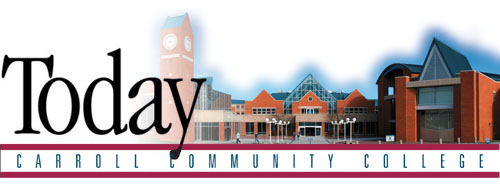
| Winter 2002, No.
6 |
|
ContentsHigh School Courses Key to College Success What They're Saying about Community Colleges Assessing Institutional Effectiveness: The Transfer Mission Recent Institutional Research Publications College Staff Nears 500; Majority are Part-time College Open House to be Held Monday February 18th
|
| Assessing
Institutional Effectiveness: The Transfer Mission |
||
|
Eighty percent of the college's degree-credit students intend to transfer to a four-year college or university to pursue the bachelor's degree. Most will transfer prior to completion of the associate degree. Thus the standard measure of completion at community colleges is the percent of students graduating or transferring within a given period of time after entry. First-time, full-time entering fall cohorts are generally used. Four years after entering Carroll Community College as first-time, full-time freshmen, 34.9 percent of the 261 members of the fall 1996 entering cohort had graduated from Carroll and/or transferred to a four-year public college or university in Maryland. Three years after entry, the 243 students starting at Carroll in fall 1997 had achieved a higher graduation/transfer rate than the preceding two cohorts. Note that the four-year graduation/transfer rate is an imperfect measure due to methodological limitations. State reporting systems do not capture community college transfers to private colleges in Maryland or to any college or university outside of Maryland. In addition to underestimating the true rate of transfer, the rate may show increased variability from cohort to cohort due to different propensities to transfer to private or out-of-state institutions. The college is exploring ways to obtain better transfer information. But at the moment, these data provided by the Maryland Higher Education Commission are the best available. Nearly three-fourths of the 52 students from Carroll Community College who transferred to a Maryland public four-year college or university during the 1994-95 academic year had earned the baccalaureate within five years of transfer. Carroll Community College's transfers during 1994-95 achieved higher bachelor's degree attainment rates than those achieved by Maryland community college transfers as a whole. After four years, Carroll students who transferred during 1995-96 also had higher bachelor's degree completion rates. Sixty percent of Carroll students who transferred to a Maryland public college or university during 1995-96 had graduated within four years, compared to 52 percent of all community college transfers. These objective measures of student transfer success are supported by survey findings. Carroll students who have continued their studies at four-year colleges and universities generally rate their preparation for transfer favorably. The most popular destinations among recent Carroll transfers have been Towson University, the University of Maryland Baltimore County, the University of Maryland College Park, Salisbury University, and the University of Baltimore.
|

 Interior
views of the theater lobby in the new Fine and Performing Arts Center.
The stairway leads to balcony seating for the 400-seat theater.
Interior
views of the theater lobby in the new Fine and Performing Arts Center.
The stairway leads to balcony seating for the 400-seat theater.